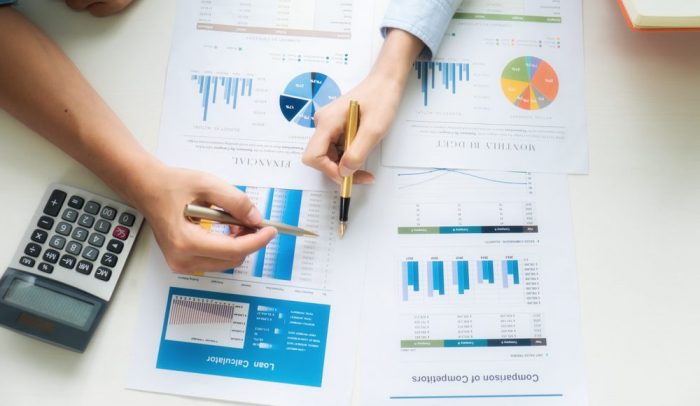
One of the best ways of building wealth and saving for future financial goals is to invest your money. People have different goals and preferences, which makes the goals vary from one person to the next. You need to create an investment strategy that follows the same basic principles, and you need to be disciplined. The article is going to help you learn more about investing wisely to meet your financial goals.
Setting Goals and starting to invest
The most important part of an investment plan is setting goals. Investing is like a road trip: your goal is the destination, while your investment plan is the road you are going to take. Some usually invest because they want to save for their retirement. But some do it to save for big goals like children’s college, down payment for a dream home, and future medical expenses.
Simple is better when you are getting started. Many finance experts advise their clients that the best investment strategy is a boring one.
There are assets and tools that are going to be part of the investment strategy.
Professional Management vs. DIY Investing vs. Robo-Advisors

Before we start looking at the types of assets you can invest in, let’s have a look at how you are going to carry out the investing strategy.
Some choose to hire a financial advisor who helps them in managing their portfolio. The advisors can charge a fee (this can be a percentage of your portfolio), or earn a commission from the products they recommended. If you want a budget-friendly option, then consider managing your own investment portfolio. You are the one to choose where your money goes.
There is another option for those who want something between the two. A robo-advisor, also known as an automated digital investment advisory program is a good option. It is a service that is going to automatically choose investments for you going by the investment goals, time horizon, risk tolerance, and other factors. They tend to charge a lower fee compared to professionals, and you don’t have the stress and work of choosing your investments as you do in a DIY method.
Stocks
A stock is owning a piece of a publicly traded corporation. Companies sell stock to raise capital for operating and capital expenses. There are two primary ways an investor can make money when it comes to buying stocks:
Dividends: The company gives its shareholders some of its profit.
Capital appreciation: If you invest in a stock that grows in value, you are going to sell it for more than you bought it.
Bonds

This is a type of debt security allowing government agencies and companies to borrow money by selling bonds. They have a predetermined interested rate, and the issuer is going to pay it over the life of the bond (the payment is twice a year). When the bond has reached its maturity, the issuer is going to pay back the bondholder the principal amount.
Investors can make money by getting the interest payments, or selling the bond for more than they paid for it.
Funds
Funds are some of the most popular investments on the market. They combine many bonds or stocks (or both). Below are the primary types of funds:
Index funds: This is a pool of investment that tracks a given market index passively, such as the total stock market or the S&P 500.
Mutual funds: This is an investment pool that is actively managed by a fund manager who hand-picks holdings, with the goal of beating the market.
Exchange-traded funds: They are the same as a mutual fund or index fund, but they can be traded throughout the day. You cannot do that with mutual and index funds.
You don’t have to leave your cash sitting around waiting to invest it. find a high-interest savings account and put it, or put it to a money market fund so you can get a good return on the money you haven’t yet decided to invest. For example, click here and get a better idea of the markets.
Managing Your Risk Levels

You usually take on a certain level of risk anytime you invest. When starting to invest, it is a good idea to have a good understanding of the risk each of the assets is going to bring, and how you can set up your portfolio in a way that reduces these risks.
When choosing an asset allocation, you need to consider your risk tolerance. In simple terms, it is your comfort level and willingness to lose your money in exchange for a high return. There is a direct correlation between investment returns and risk. The higher the risks, the higher the return. Investment options that have low risk usually give a small return.
Different people have different risk tolerance. You need to know yours when creating your investment strategy and portfolio. Make sure you factor in your risk tolerance when choosing your assets. If you choose to use a robo-advisor it is going to use your risk tolerance to make the investment decisions.
Below are some steps you can take to mitigate the risk when investing.
Diversification
This is spreading your money across different investments. When you have a diversified portfolio, the individual investment is going to have less impact on your portfolio.
You can diversify across asset classes. You can choose to invest in bonds, stocks, real estate, and cash equivalents so your investment is not all in one class. If you do this and the bonds market is going well but the stock market is doing poorly, the overall portfolio is not going to be affected.
Another way of diversifying is with asset classes. Instead of putting all your money in one company’s stock, invest in many companies – or even a total stock market index fund – because it is going to help in reducing risk.
Dollar-Cost Averaging

This means making recurring contributions no matter how the market is performing. Most people do this and they don’t even realize it. They do it by contributing monthly to their 401(k) plan at work.
Dollar-cost averaging is a good strategy because it is consistent, unlike the alternative of timing the market. You are going to put money in your investment portfolio, and it grows over time.
Core-satellite Strategy
This has been designed to reduce risk and costs while trying to outperform the market. With this strategy, you have the “core” of your portfolio, which in most cases is a passively managed index fund. You then put the rest of your money in investments that are actively managed, which make up the satellites. You can reduce volatility using the core of your portfolio, and achieve higher returns using the satellites.
Cash on Hand

No matter which investment strategy you use, it is important to have some of your money in cash or cash equivalents. There is no worrying about downturns in the market when you have cash. If you are saving for something that is a couple of years away, there is no worrying about the loss of your investment before you need it.
There are some risks with cash. When you have cash, your money is not growing because of the low-interest rates. The target inflation rate by the Federal Reserve is 2%, which means your cash is going to lose its value. This is why you should make cash a part of your investment strategy.
Taking Advantage of Compounding
There is a popular phrase “time in the market beats timing the market” that applies to investments. This phrase means it is better to put money in the market consistently for it to grow, instead of timing the market for bigger returns. The concept is used alongside the dollar-cost average strategy, which involves investing consistently no matter what is happening.
This strategy makes a big difference because the returns compound, which means they are added to the principal investment. This means more interest and increases principal even if you don’t add anything.
If you invest $200 a month when you are 25-35 years, and you never contribute anything after 35, your money is going to grow. Assuming the investment has a return of 10%, the average stock market return, the investment is going to be over $676,000 by the age of 65. This return is from a total investment of $24,000.
What if you invested the same amount later? If you invested the same $200 a month for 10 years but don’t get started until 55 years, then the investment is going to grow to just $38,768. Time in the market is going to make the most difference – hundreds of thousands or even millions.
Minimizing Your Taxes and Costs

The more you have to pay in taxes and fees, the less you have to help in reaching your financial goals. While these percentages might not seem much, remember that the investment compounds. The money you are paying for expenses and taxes is not going to compound. This turns out to be expensive in the long run.
Taxes are the first investment expense you need to watch out for. You cannot avoid them, but that doesn’t mean paying more than you have to. A good way of saving on taxes is by investing in tax-advantaged accounts. Individual retirement accounts (IRA), 401(k) plans, and health savings accounts (HSAs) offer tax savings.
Fees paid on your investment is also another expense you have to look at. The common fees are those paid to a financial advisor and expense ratios on individual investments.
The good thing is there are ways of reducing these fees. Investors can choose to manage their investment using stock trading apps and a robo-advisor. You can expect it to cost less than a financial advisor.
You also need to pay attention to the fees with each investment. Mutual funds have a higher expense ratio. This is because they are actively managed, and there is always a person running them, who has to be paid. Index funds are passively managed, there is no one hand-picking the investments. This is why they tend to have a lower expense ratio.
Checking on Your Money

There is no investment strategy where you invest and forget about it. even passive ones have to be checked from time to time. You have the chance of checking their performance, adjusting your strategy for your goals, and rebalancing if need be.
Regularly check in on your investment. Set a reminder for every 6-12 months to review and adjust your investment portfolio.
Rebalancing is the process of adjusting your investment to return to the intended asset allocation. There are some investments that are going to grow at a faster rate, and this can result in them making a greater percentage of your portfolio. Let us say you have decided that 25% of your investment is going to bonds and 75% to stocks. The return of stocks is usually higher than bonds, which means they are going to make a bigger percentage of your total portfolio. You have to sell some of the stocks and put the money in bonds to rebalance.








